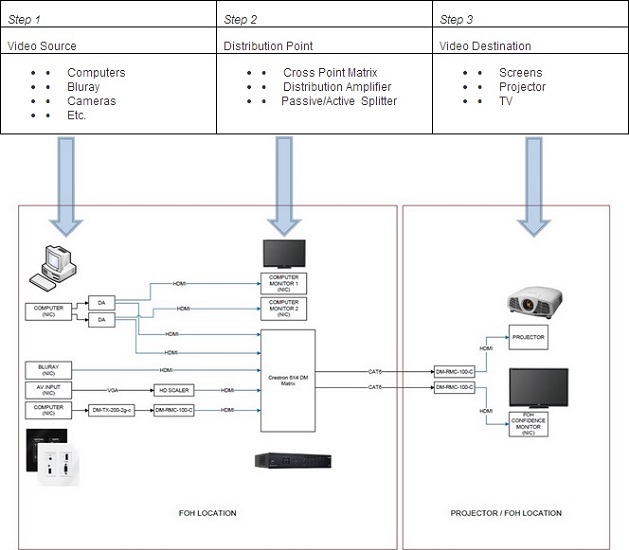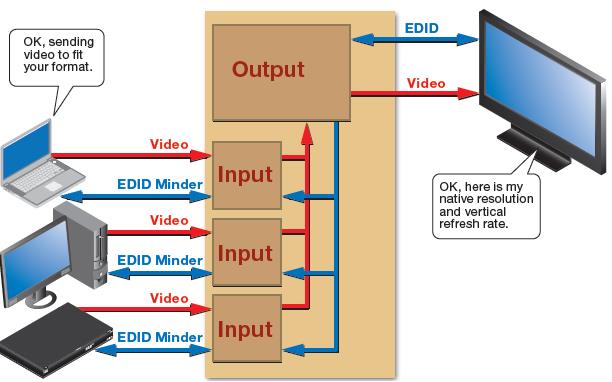Pro Sound
Video Distribution
How do I distribute my video to all the TVs and Projectors? Answer: Very carefully.
To distribute video properly you need a plan.
This plan needs to answer the following questions:
• What type of displays am I going to use?
• How many displays am I going to need?
• How will the video signal get there?
• How much control do I need over the signal and display?
• How many sources do I need to distribute?
• What aspect ratio am I going to standardize upon?
• How am I going to integrate video sources that have different aspect ratios or frame rates than that of my standard?
• Will I be distributing HDCP (High-Bandwidth Digital Content Protection) Content ie. Bluray Movies?
• How technical is my staff to handle the system?
Video Distribution Example

Video Distribution Example

Video Distribution Terms Should Know and Understand
EDID Management (Extended Device Identification Data)
EDID information is stored in the display and the video source. The display sends this information to the source and it matches it up with its EDID tables. If there is a match, it will send the video at the correct resolution and refresh rate.


HDCP (High-Bandwidth Digital Content Protection)
HDCP is a content protection protocol implemented by the movie and broadcast industry to protect their content. Many Bluray Players, Computers and Handheld devices have HDCP and it is imperative your Video Distribution System can handle this requirement.
Cross Point Matrix
A cross point matrix allows audio and video from any source to be routed to any destination. There are two modes cross-point matrixes can operate, audio follows video, and break-away audio and video. In audio follows video, the audio signal shows up at the same destination as the video. In break-away, an audio source can be paired with a different video source. This allows great flexibility in many integration projects.
Distribution Amplifier
A distribution amplifier takes one source and splits it to many destinations. Power is applied to prevent signal loss.
Passive vs. Active Splitter
Splitters split an incoming signal into two or more ways. Passive refers to non-powered and active refers to powered. Generally the active types are more costly, but retain signal quality. Analog signals can be passive or active, but digital is always active.
Source: http://www.prosoundcanada.com/video_distribution.html
Project Manager
PJS is always on the lookout for an experienced Project Manager, responsible for managing the execution of multiple concurrent projects from start to finish, ensuring on-time, on-budget, delivery to our demanding quality standards.
AV Installation Technician
PJS is always on the lookout for an experienced Installation Technician, responsible for leading a crew of installers on complex commercial and institutional A/V installations.
Senior Sales Associate
In this role you will sell PJS Systems products and services to corporate, educational, government and other agreed upon target market segments.